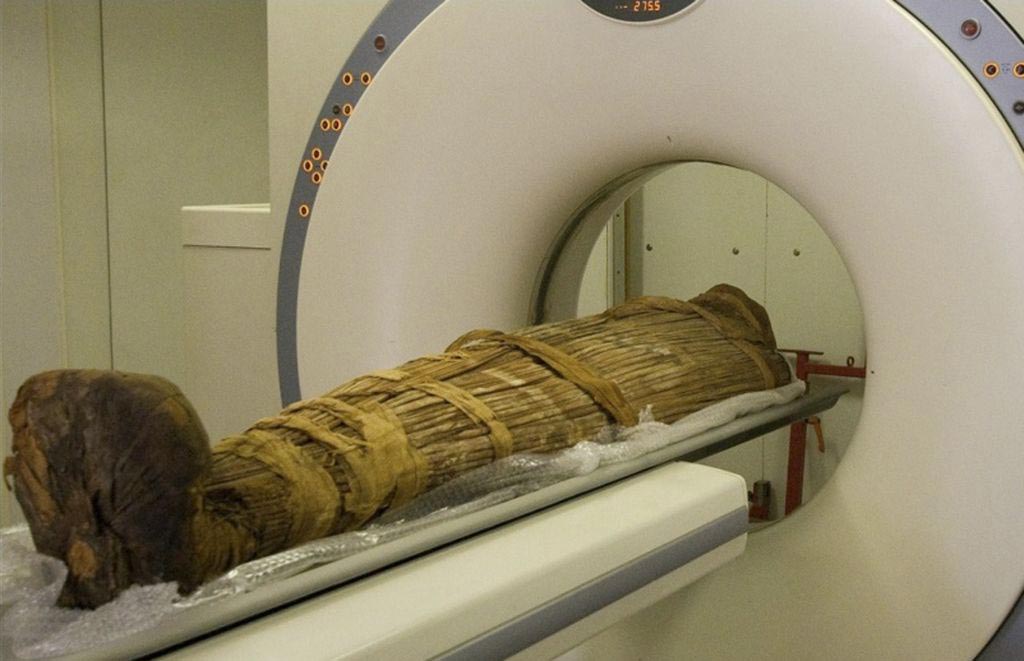CT Imaging Technique Expands Paleopathology Options
By MedImaging International staff writers
Posted on 08 Jan 2019
Propagation-based computed tomography (CT) can be used to enhance contrast when imaging soft tissue remains of ancient mummies, claims a new study.Posted on 08 Jan 2019
Rresearchers at the Museum of Mediterranean and Near Eastern Antiquities (Stockholm, Sweden), the KTH Royal Institute of Technology (Stockholm, Sweden), and the American University in Cairo (Egypt) conducted a study to evaluate phase-contrast CT as a noninvasive alternative to histology in the study of ancient soft tissue. To do so, they scanned a mummified human hand from ancient Egypt using an experimental arrangement for propagation-based imaging that included a microfocus x-ray source, a rotation stage for the sample, and an x-ray detector.

Image: An Egyptian mummy undergoing a CT scan (Photo courtesy of KTH).
The mummified hand was imaged in two different modes. First, a CT scan of the whole hand was performed in an overview arrangement tailored for a large magnification. Then, a detailed scan of the tip of the middle finger was performed, with an estimated resolution of 6–9 µm. The results showed that the overview CT allowed identification of tendons in the hand, as well as identification of arteries and nerves in the dehydrated soft tissue. In the detailed phase-contrast setting, virtual histology of the soft tissues of the fingertip could be performed.
The scan revealed blood vessels in the nail bed, the microanatomy of the bone marrow and hypodermis, and even the various layers of the skin could be perceived. Round structures in the adipose tissue were identified as the remains of adipocytes. According to the researchers, phase-contrast CT could soon replace the extraction and chemical processing currently required for accurate soft-tissue pathology in many old and fragile specimens. The study was published in the December 2018 issue of Radiology.
“Just as conventional CT has become a standard procedure in the investigation of mummies and other ancient remains, we see phase-contrast CT as a natural complement to the existing methods,” said Jenny Romell, MSc, of the KTH Royal Institute of Technology. “We hope that phase-contrast CT will find its way to the medical researchers and archaeologists who have long struggled to retrieve information from soft tissues, and that a widespread use of the phase-contrast method will lead to new discoveries in the field of paleopathology.”
Paleopathology is an interdisciplinary science focused on the study of ancient diseases. The pathologies may be intrinsic to the system itself (such as autoimmune disorders or traumatic arthritis) or caused by an extrinsic factor (such as bacteria or poison). Most of the work is done by anthropologists studying diseases in ancient cultures, with substantial contributions of medical personnel, especially in modern comparative studies.
Related Links:
Museum of Mediterranean and Near Eastern Antiquities
KTH Royal Institute of Technology
American University in Cairo














